The air roots of an orchid are an important part of the plant and help to ensure that the plant gets the nutrition it needs. If it feels wet, dont Use a water soluble fertilizer. Many people assume that such a delicate and beautiful plant must be hard to care for. During the winter, however, you can place the orchid in a south-facing or east-facing window that gets some direct light. . If water is trapped in the crown, it can lead to rot. Therefore, you should be able to get a good look at the roots of the plant you are going to buy. As I live in a higher latitude, I will move my orchids to a south facing window in the winter, to ensure that they receive enough sunlight. Gray, flaky roots normally indicate a dehydrated plant.  I normally cut the stem above the 3rd or 4th node, depending on the height of the stem.
I normally cut the stem above the 3rd or 4th node, depending on the height of the stem.  Orchids live for many years, and will bloom again and again if treated the right way. (Youll need a good pair of gardening shears). Yes, thats totally fine to trim the extra lengths of stem. The site of the cut often becomes the point at which a new stem or stems will grow. This is due to orchids being quite different from many other plants. It is a good idea to pick one with a long flower stem, but with only a few flowers out, and lots of buds waiting to develop. Phalaenopsis orchids generally like a bright location to grow, but dont do well in direct sunlight. If you pour water onto your orchid from above, you are likely to leave standing water in the crown where the new leaves are growing. Most Phalaenopsis fit in a 4- or 6-inch azalea pot, and they are usually never planted a pot larger than 6 inches in diameter. There are a number of easy tips to follow to pick a healthy orchid that will flower for months after you buy it and that you can enjoy and look after for a long time after this if you wish. What is the best potting mix please?
Orchids live for many years, and will bloom again and again if treated the right way. (Youll need a good pair of gardening shears). Yes, thats totally fine to trim the extra lengths of stem. The site of the cut often becomes the point at which a new stem or stems will grow. This is due to orchids being quite different from many other plants. It is a good idea to pick one with a long flower stem, but with only a few flowers out, and lots of buds waiting to develop. Phalaenopsis orchids generally like a bright location to grow, but dont do well in direct sunlight. If you pour water onto your orchid from above, you are likely to leave standing water in the crown where the new leaves are growing. Most Phalaenopsis fit in a 4- or 6-inch azalea pot, and they are usually never planted a pot larger than 6 inches in diameter. There are a number of easy tips to follow to pick a healthy orchid that will flower for months after you buy it and that you can enjoy and look after for a long time after this if you wish. What is the best potting mix please?  It is normal for your orchid to grow roots above the soil. I havent had a flower on it since I got it for our 50th wedding anniversary 1 year ago. The first is when the growing media starts to break down and decompose. The name orchid comes from the Greek word orkhis, and was named by an ancient Greek botanist named Theophrastos, who thought the orchid's roots resembled a part of the male anatomy. encourage flowering.
It is normal for your orchid to grow roots above the soil. I havent had a flower on it since I got it for our 50th wedding anniversary 1 year ago. The first is when the growing media starts to break down and decompose. The name orchid comes from the Greek word orkhis, and was named by an ancient Greek botanist named Theophrastos, who thought the orchid's roots resembled a part of the male anatomy. encourage flowering.  Orchids are epiphytic in their native habitat, growing on trees and rock formations, instead of directly in the ground. There are about 60 true species of Phalaenopsis orchids. I have seen orchids being grown successfully in perlite, expanded clay, peat, bark, sphagnum moss and various mixed media. I would recommend using a reduced strength of fertilizer, but using it on a more frequent basis, rather than using full strength less often. Most people place these into more decorative pots without drainage holes. Orchids can be propagated by seed, but the process is time-consuming and requires special laboratory equipment, so it's best to leave this to commercial growers. However, in warmer climates, it is likely that your orchids will need more water, and using ice cubes may not provide sufficient hydration for your plants. In native conditions, moth orchids grow on trees. to rot if theyre kept constantly moist. Orchids should ideally be planted in clear pots, to ensure that th roots have access to good amounts of light. You can encourage new American Orchid Society. Still, scale, mealy bugs, slugs, and snails can occasionally move into an outdoor or greenhouse-grown orchid. Moisten the bark potting medium and plant the keiki in its own pot (it's okay if the top parts of the roots are exposed). flowers to appear, simply by cutting the stem. Jon VanZile is a Master Gardener who wrote content for The Spruce for over a decade. Some grower favorites include: As with all epiphytic orchids, Phalaenopsis should be planted in free-draining containers with large drainage holes so they never sit in water. Due to their long-lasting nature Phalaenopsis Orchids are a very popular present. Let them spill out of the pot and do their own thing. This article is going to discuss my favorite type, and one of the most popular varieties, the Phalaenopsis or Moth Orchid. Relocate your orchid to a cooler areaone with temperatures of 55 to 65 F and bright indirect sunlight. If you do inadvertently get water in the crown of the plant or on the leaves, you should absorb this water with a paper towel to reduce the likelihood of crown rot. Mealy bug is the most common pest found on the plant, but to keep them away, simply spray or wipe some white oil or eco oil onto both sides of the leaves. If you wish to place your orchid on a windowsill, it is best to put it in a west or east facing window. It is a known fact that you should definitely not remove the roots as there is a high chance youll harm the plant or introduce a potentially dangerous virus. It is at this point that a little more effort is required to care for your orchid. For this reason, they are considered an epiphytea type of plant that requires a host, but is not parasitic. We know these elegant orchids are starting to Dont be too worried about removing unhealthy roots. Healthy roots are very important for most plants, and orchids are no exception. I like to ensure that I fertilize my orchids approximately every 2 weeks with a reduced strength fertilizer solution throughout this growth phase. When your orchid finally finishes flowering, This is a perfectly normal feature of epiphytic plants, which are used to growing on the surface of other plants. Alternatively, yellowing leaves or brown or yellow spots on the leaves may indicate excessive light or burning of the leaves due to excessive direct sunlight. See my article on yellow leaves in orchids for, You can also achieve good phalaenopsis orchid care in indoor spaces away from windows, as long as there is a good source of light, either natural or artificial, to ensure that the plant gets sufficient light. Water your orchid carefully, and try to avoid Check out this excellent article from Caradise for an greatguide to encouraging orchids to rebloom. Black or brown roots that feel soft and mushy are usually a sign of over watering or disease. It is during the vegetative phase of orchid growth that fertilizer is really needed, to give the plant the energy to start growing a new stem, buds and flowers. Reward Program members enjoy exclusive access to products and curated experiences that help plant people thriveincluding a free, 1-year premium membership to Greg: Plant Care Assistant. Phalaenopsis orchids are hardy only in USDA zones 10 to 12, and you rarely see them growing outdoors in the continental United States other than in the southern tip of Florida. So together weve compiled a comprehensive list of our tried and tested methods to care for your Phalaenopsis Orchid. These plants have been extensively hybridized, and there are thousands of hybrids, ranging from the classic white hybrid moth orchid to jewel-like miniatures, with clouds of yellow and candy pink blooms.
Orchids are epiphytic in their native habitat, growing on trees and rock formations, instead of directly in the ground. There are about 60 true species of Phalaenopsis orchids. I have seen orchids being grown successfully in perlite, expanded clay, peat, bark, sphagnum moss and various mixed media. I would recommend using a reduced strength of fertilizer, but using it on a more frequent basis, rather than using full strength less often. Most people place these into more decorative pots without drainage holes. Orchids can be propagated by seed, but the process is time-consuming and requires special laboratory equipment, so it's best to leave this to commercial growers. However, in warmer climates, it is likely that your orchids will need more water, and using ice cubes may not provide sufficient hydration for your plants. In native conditions, moth orchids grow on trees. to rot if theyre kept constantly moist. Orchids should ideally be planted in clear pots, to ensure that th roots have access to good amounts of light. You can encourage new American Orchid Society. Still, scale, mealy bugs, slugs, and snails can occasionally move into an outdoor or greenhouse-grown orchid. Moisten the bark potting medium and plant the keiki in its own pot (it's okay if the top parts of the roots are exposed). flowers to appear, simply by cutting the stem. Jon VanZile is a Master Gardener who wrote content for The Spruce for over a decade. Some grower favorites include: As with all epiphytic orchids, Phalaenopsis should be planted in free-draining containers with large drainage holes so they never sit in water. Due to their long-lasting nature Phalaenopsis Orchids are a very popular present. Let them spill out of the pot and do their own thing. This article is going to discuss my favorite type, and one of the most popular varieties, the Phalaenopsis or Moth Orchid. Relocate your orchid to a cooler areaone with temperatures of 55 to 65 F and bright indirect sunlight. If you do inadvertently get water in the crown of the plant or on the leaves, you should absorb this water with a paper towel to reduce the likelihood of crown rot. Mealy bug is the most common pest found on the plant, but to keep them away, simply spray or wipe some white oil or eco oil onto both sides of the leaves. If you wish to place your orchid on a windowsill, it is best to put it in a west or east facing window. It is a known fact that you should definitely not remove the roots as there is a high chance youll harm the plant or introduce a potentially dangerous virus. It is at this point that a little more effort is required to care for your orchid. For this reason, they are considered an epiphytea type of plant that requires a host, but is not parasitic. We know these elegant orchids are starting to Dont be too worried about removing unhealthy roots. Healthy roots are very important for most plants, and orchids are no exception. I like to ensure that I fertilize my orchids approximately every 2 weeks with a reduced strength fertilizer solution throughout this growth phase. When your orchid finally finishes flowering, This is a perfectly normal feature of epiphytic plants, which are used to growing on the surface of other plants. Alternatively, yellowing leaves or brown or yellow spots on the leaves may indicate excessive light or burning of the leaves due to excessive direct sunlight. See my article on yellow leaves in orchids for, You can also achieve good phalaenopsis orchid care in indoor spaces away from windows, as long as there is a good source of light, either natural or artificial, to ensure that the plant gets sufficient light. Water your orchid carefully, and try to avoid Check out this excellent article from Caradise for an greatguide to encouraging orchids to rebloom. Black or brown roots that feel soft and mushy are usually a sign of over watering or disease. It is during the vegetative phase of orchid growth that fertilizer is really needed, to give the plant the energy to start growing a new stem, buds and flowers. Reward Program members enjoy exclusive access to products and curated experiences that help plant people thriveincluding a free, 1-year premium membership to Greg: Plant Care Assistant. Phalaenopsis orchids are hardy only in USDA zones 10 to 12, and you rarely see them growing outdoors in the continental United States other than in the southern tip of Florida. So together weve compiled a comprehensive list of our tried and tested methods to care for your Phalaenopsis Orchid. These plants have been extensively hybridized, and there are thousands of hybrids, ranging from the classic white hybrid moth orchid to jewel-like miniatures, with clouds of yellow and candy pink blooms.  Learn how and when to repot your orchid here. your orchid is by sticking your finger into the pot.
Learn how and when to repot your orchid here. your orchid is by sticking your finger into the pot. Repot Phalaenopsis orchids in the spring, after the bloom is done and when you see roots growing out of the pot. To mimic these conditions, potted orchids are often grown in a potting mix made from fir tree bark, redwood bark chips, or Monterey pine bark chips. This is usually caused by sudden changes in temperature, humidity, moisture, or fertilizer. Phalaenopsis Orchids might have a complicated name but they are easy to look after! As long as the roots dont sit in the water, this will cause no issues.
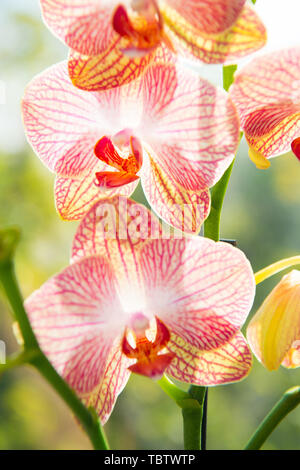 To increase the humidity, add a pebble tray with water below the plant, but don't let the pot sit in the water. Read more ? prevent the roots from sitting in the water, but will provide a humid zone It does not have the large water-storing pseudobulbs found on sympodial (or branching) orchids, hence, this plant has a lower tolerance for drought. Reduced strength formulations can be purchased directly, or you can dilute stronger fertilizers more than the recommended amount. To stimulate re-flowering, your phalaenopsis orchid should ideally experience a variation in the temperature between day and night. As previously mentioned, the vegetative phase after flowering is the time when fertilizing is the most important. It is normal for an orchid to prioritize the health of the top and younger leaves, so if there is some die back of the lower leaves, this is nothing to worry about. Learn tips for creating your most beautiful (and bountiful) garden ever.
To increase the humidity, add a pebble tray with water below the plant, but don't let the pot sit in the water. Read more ? prevent the roots from sitting in the water, but will provide a humid zone It does not have the large water-storing pseudobulbs found on sympodial (or branching) orchids, hence, this plant has a lower tolerance for drought. Reduced strength formulations can be purchased directly, or you can dilute stronger fertilizers more than the recommended amount. To stimulate re-flowering, your phalaenopsis orchid should ideally experience a variation in the temperature between day and night. As previously mentioned, the vegetative phase after flowering is the time when fertilizing is the most important. It is normal for an orchid to prioritize the health of the top and younger leaves, so if there is some die back of the lower leaves, this is nothing to worry about. Learn tips for creating your most beautiful (and bountiful) garden ever.  The last thing you want is for your flower stem to break, as this will be the end of your flowers, until the plant reblooms many months later.
The last thing you want is for your flower stem to break, as this will be the end of your flowers, until the plant reblooms many months later. A lot of it depends on how healthy the orchid is and whether the growing conditions are optimal. This will encourage your orchid to start reflowering! On average, Phalaenopsis Orchids will only need watering around once a week, or perhaps a little more often in the hot summer months. These orchids are dyed using a safe and natural patented method of injecting a specially formulated dye (similar to food dye) into the stem of the plants. Orchids generally like it to be slightly cooler at night than during the day and they particularly dislike drafts and rapid changes in the temperature. meals. They are a few years old and havent flowered since, and they are both in different potting mix types. Here are two good methods to check whether your orchid needs watered. You should look for a plant with a strong and sturdy stem, which looks like it is easily supporting the weight of the flowers and buds. A plant with proper lighting will produce light green leaves. A daytime temperature of between 70-85 F (21-29 C) and a nighttime low of 60-70 F (16-21 C) is ideal. Sign up now to unlock your mystery discount. Follow these basic tips, and you are well on the way to providing good phalaenopsis orchid care. In the wild, Phalaenopsis orchids only bloom once a year. getting any water in the plants crown at all. Wash your hands and any tools you'll be using thoroughly. I do this with most of my orchids. Watering the plant will lead to an immediate color change in the air roots. Native to India, China, and Southeast Asia this orchid with leafy stems and long-lasting flowers does best a bright, warm, humid spot. Orchids do not like dry air, so be sure to keep humidity around the plant anywhere from 5070%. Rotate your orchid from time to time to keep its growth even. is dry it will feel very light, and it might be time to give your orchid a Ive written an article about repotting phalaenopsis orchids here. Having said this, orchids usually dont enjoy sudden changes in their climates, so it you dont mind too much, you are best finding a location that your orchid loves and keeping it there, rather than moving it all round your house. 1 cm above the node. Phalaenopsis need plenty of air circulation around their root system, as they don't thrive in a suffocating medium. These are aerial rootsdon't cut them off. (If you gently dig into the bark media with your fingers, you might just spot the coco plug at the center of the pot, where the baby orchid was first potted!). Weve updated this post to cover trimming the roots & reporting. Thank you great i have a orchid growing taller and taller air roots trailing over side of pot leaves now unhealthy ? Most pest conditions can be treated by spraying with insecticidal soap. The roots wont tolerate this and can result in root rot if you do. Orchids are a hugely popular houseplant, and for very good reasons. The time between flowering phases is usually about 6-9 months. Phalaenopsis orchids in the vegetative phase will benefit from a more humid environment than during the flowering phase. Enjoy your stay at Smart Garden Guide. You can also try misting the pot on very hot, Once the flowers are gone, you can do a few things to ensure that the plant will flower again in the future. Orchids generally prefer to be root constrained, so dont change to a larger pot than necessary. The pebbles will No spam ever. While they dont like to be watered too There are quite a number of aspects of the watering of phalaenopsis orchids that are particularly important. Most bark potting media, complete with perlite, sphagnum moss, charcoal, or coconut husk chips will help the orchid retain water. They can remain in this potting medium for 1-2 years, until their roots and leaves have outgrown the size of the pot and the orchid needs fresh nutrients and larger space. There are two main reasons why a phalaenopsis orchid may need repotted. Im sure if you ask most people this question, they would say a few months. This isnt a poison, but it will suffocate the There is a lot of conflicting advice about whether using ice to water your orchids is it good thing to do or not. The leaves will tell you a lot about the overall health of the orchid. This allows the roots plenty of access to light and air at the more crucial vegetative stage. bugs, leaving your precious plant safe and happy! Let the pot dry fully, and then fill it with an orchid potting media. I think that the state of leaves can determine if your orchid is getting the right amount of light or not A dark green leaves show your plant is not getting sufficient light, Yellowish green to red leaves show your plant is getting too much light, and bright green leaves show your plant is getting sufficient light. Water should never be allowed to rest around the stem of the plant. According to the experts, it is recommended to repot orchids every one or two years, however if you noticed your orchids roots have outgrown its pot, or they start to creep over the side of the pot, then its an obvious sign your pot has become too small. When looking for a good orchid to pick from the store, the leaves should be bright, and a vibrant deep green color. When re-potting, can any soil do? Place your orchid in a bright room, but not in direct sunlight. Unfortunately, bugs seem to like the Phalaenopsis Orchid as much as we do! It is a good idea to pick a transparent pot for phalaenopsis orchids. Apply the dilute fertiliser every two weeks or according I always water my orchids at least once in between applications of fertilizer, to ensure there is no build up of fertilizer in the growing medium.
 Usually when the leaves turn yellow its a sign of over-watering. Our stores around the US are open for plant shopping, repotting, curbside pickup, in-person workshops, and more. What is the best type of fertilizer for these orchids? After 5 minutes, you can empty the outer pot, ensuring the inner pot is well drained, and place your orchid back in its normal location. There are reports of domestic orchids that have lived for more than a century, but certainly several decades is more than possible for an attentive grower. Potting and Repotting Phalaenopsis Orchids. After a phalaenopsis orchid has bloomed, it will enter a period of dormancy.
Usually when the leaves turn yellow its a sign of over-watering. Our stores around the US are open for plant shopping, repotting, curbside pickup, in-person workshops, and more. What is the best type of fertilizer for these orchids? After 5 minutes, you can empty the outer pot, ensuring the inner pot is well drained, and place your orchid back in its normal location. There are reports of domestic orchids that have lived for more than a century, but certainly several decades is more than possible for an attentive grower. Potting and Repotting Phalaenopsis Orchids. After a phalaenopsis orchid has bloomed, it will enter a period of dormancy. 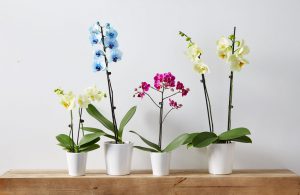 Water the orchid infrequently, being guided by the plant, rather than watering on a schedule. Because orchids are epiphytes that grow on trees in their natural habitat, they need air to flow around their roots, and traditional potting mix just won't do. Phalaenopsis orchids are available everywhere you look. To induce a flower spike, the plant needs a few cooler nights, with temperatures around 55 F, in order to bloom. Mist the baby plant daily with water until it becomes established. For this reason, I often place my orchids on a wide drip tray, with a small amount of water in it. They are easy to care for in the vegetative stage and will flower many times if treated well. Home growers, however, can propagate their moth orchid by replanting the orchid's naturally produced "baby," known as a keiki. Please note; When its time to repot, please be careful when removing your plant from its current pot. hydrated without being wet. They are a wonderful alternative to a bunch of flowers to brighten up your home, as the flowers last for months at a time, and the plants can be kept for years, re-flowering many many times. You should only water the roots of your orchid, as getting the leaves and flowers of your orchids wet can lead to all kinds of problems.
Water the orchid infrequently, being guided by the plant, rather than watering on a schedule. Because orchids are epiphytes that grow on trees in their natural habitat, they need air to flow around their roots, and traditional potting mix just won't do. Phalaenopsis orchids are available everywhere you look. To induce a flower spike, the plant needs a few cooler nights, with temperatures around 55 F, in order to bloom. Mist the baby plant daily with water until it becomes established. For this reason, I often place my orchids on a wide drip tray, with a small amount of water in it. They are easy to care for in the vegetative stage and will flower many times if treated well. Home growers, however, can propagate their moth orchid by replanting the orchid's naturally produced "baby," known as a keiki. Please note; When its time to repot, please be careful when removing your plant from its current pot. hydrated without being wet. They are a wonderful alternative to a bunch of flowers to brighten up your home, as the flowers last for months at a time, and the plants can be kept for years, re-flowering many many times. You should only water the roots of your orchid, as getting the leaves and flowers of your orchids wet can lead to all kinds of problems. 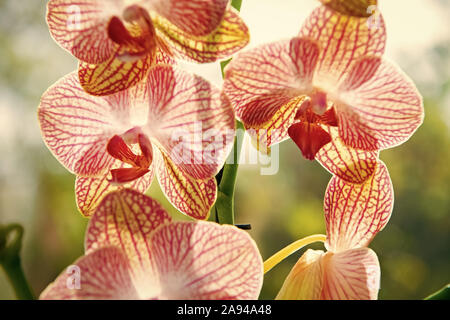 How can I get Phalaenopsis orchids to rebloom? When this happens, dont worry, your orchid is not dead, its just storing up energy to re-bloom again next season.
How can I get Phalaenopsis orchids to rebloom? When this happens, dont worry, your orchid is not dead, its just storing up energy to re-bloom again next season. 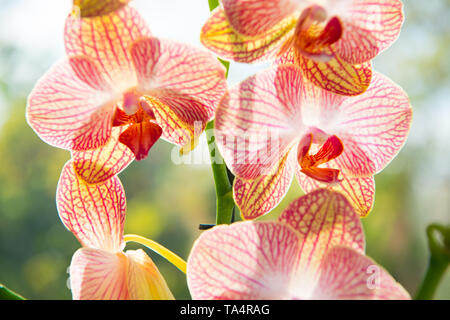 This can lead to mold spots developing on the leaves, or more commonly on the petals of the flowers. The plant will thrive much better with a smaller volume of healthy roots, than a larger volume of roots with a diseased or unhealthy section. Should You Mist Orchids? It is often highlighted as a good idea, as it encourages people not over water their orchids due to the small amount of water in ice cubes. And this is fine for most people. Cheers! April Birth Flower: What is the Birth Flower for April? The higher If you like to keep your house warm, youll make an excellent orchid owner! and youre left with just the stem, dont despair!
This can lead to mold spots developing on the leaves, or more commonly on the petals of the flowers. The plant will thrive much better with a smaller volume of healthy roots, than a larger volume of roots with a diseased or unhealthy section. Should You Mist Orchids? It is often highlighted as a good idea, as it encourages people not over water their orchids due to the small amount of water in ice cubes. And this is fine for most people. Cheers! April Birth Flower: What is the Birth Flower for April? The higher If you like to keep your house warm, youll make an excellent orchid owner! and youre left with just the stem, dont despair! Just to contribute a little to the post if you dont mind.
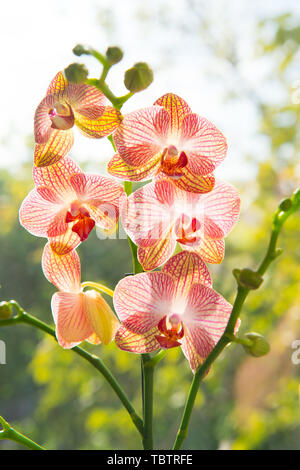
- Extendable Dining Table Seats 6-8
- Living Room Magnolia Home Decor
- Michael Kors Large Bucket Bag
- Leave-in Conditioner For Curly Hair Boots
- Men's Nike Striped Shirt
- Daler Rowney Charcoal Pencils
